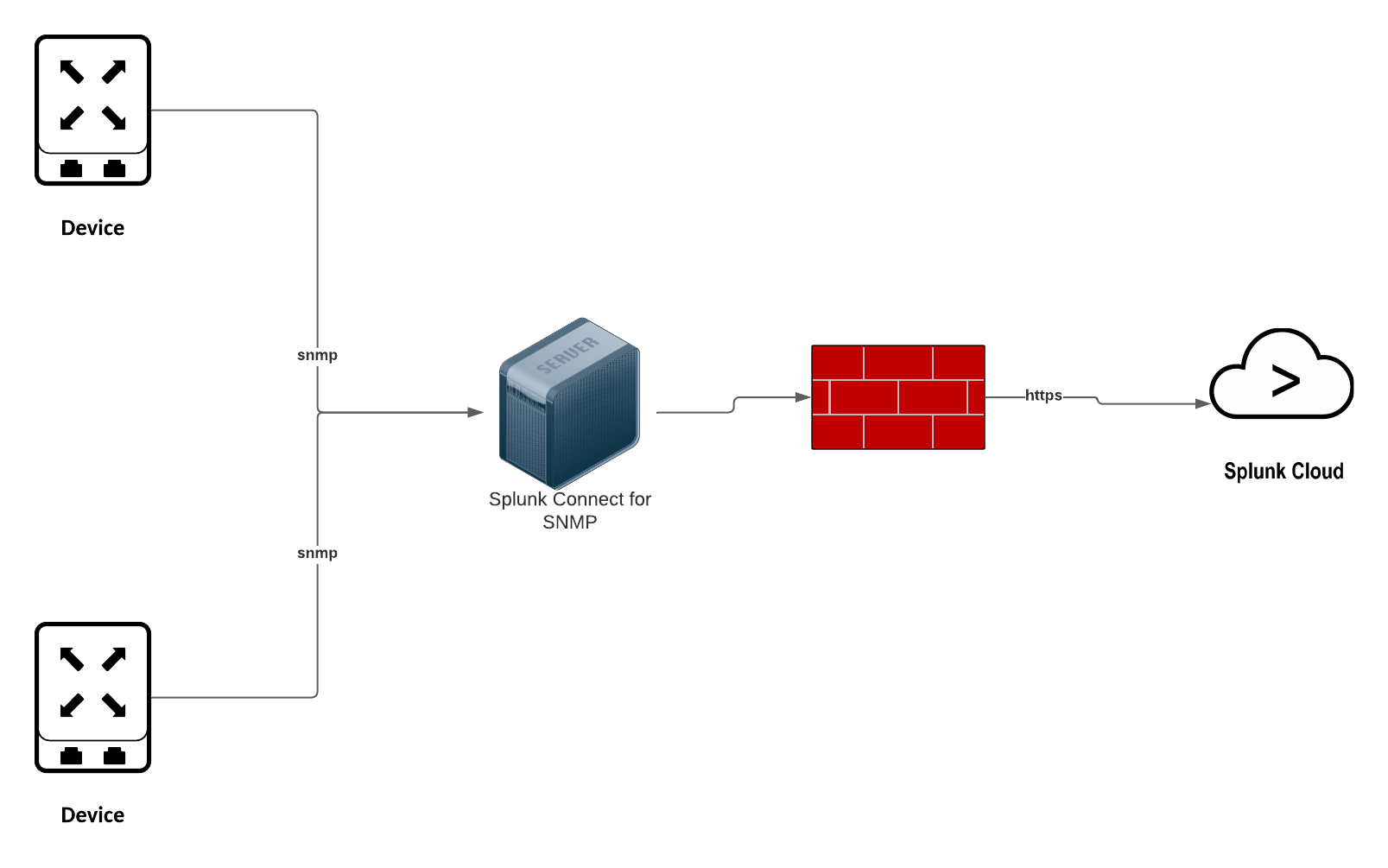Planning¶
Splunk Connect for SNMP (SC4SNMP) is a solution that allows the customer to get data from network devices and appliances when a more feature-complete solution, such as the Splunk Universal Forwarder, is not available.
Architecture¶
SC4SNMP is deployed using a Kubernetes distribution, typically MicroK8s, that’s designed to be a low-touch experience for integration with sensitive edge network devices. It will typically be deployed in the same network management zone as the monitored devices and separated from Splunk by an existing firewall.

Requirements¶
-
A supported deployment of MicroK8s
-
16 Core/32 threads x64 architecture server or virtual machine (single instance) 12 GB ram
-
HA Requires 3 or more instances (odd numbers) 8 core/16 thread 16 GB ram
-
50 GB root mount
-
HTTP access (non-proxy) allowed for the HTTP(s) connection from SC4SNMP to the Splunk destination.
-
Splunk Enterprise/Cloud 8.x or newer and/or Splunk Infrastructure Monitoring (SignalFx)
Planning Infrastructure¶
When planning infrastructure for Splunk Connect for SNMP, (SC4SNMP), remember the following limitations:
A single installation of Splunk Connect for SNMP (SC4SNMP) on a machine with 16 Core/32 threads x64 and 64 GB RAM will be able to handle up to 1500 SNMP TRAPs per second.
A single installation of Splunk Connect for SNMP (SC4SNMP) on a machine with 16 Core/32 threads x64 and 64 GB RAM is able to handle up to 2750 SNMP varbinds per second. As for events per second that are visible in Splunk, a single SC4SNMP event can contain more than one varbind inside, which is an automatic grouping feature. For example, the network interface would be grouped into one event, with varbinds grouped together to describe the same thing. That is why, depending on the configuration, the number of events per second may vary.